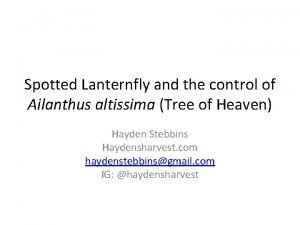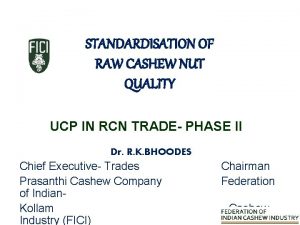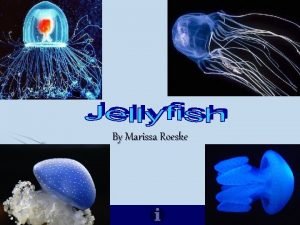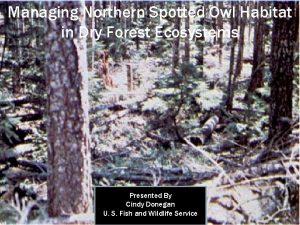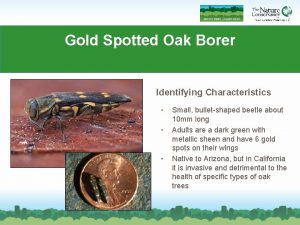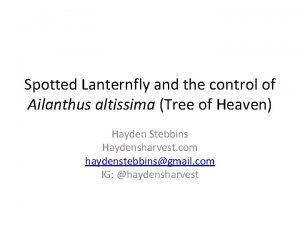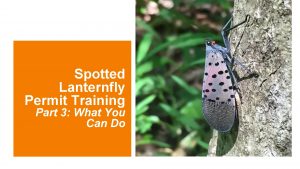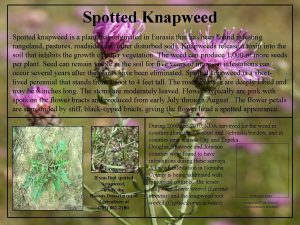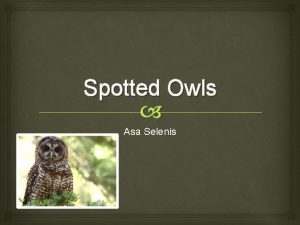Spotted lanternfly Lycorma delicatula Origins Spotted lanternfly is







- Slides: 7

Spotted lanternfly Lycorma delicatula

Origins • Spotted lanternfly is an invasive planthopper which is thought to be native to China. It is also present in Southeast Asia and South Korea. Richard Gardner, Bugwood. org

Eggs October. June Egg Laying September - December Life cycle Adult July December Hatch – 3 rd instar May - July 4 th instar July September

Hosts • It is known to primarily affect treeof-heaven, Ailanthus altissima. • It has been detected on many host plants, including apples, plums, cherries, peaches, nectarines, apricots, almonds, pine, oak, walnut, poplar, and grapes. • Nymphs feed on a wide range of plant species. Adults feed and lay eggs primarily on A. altissima. Joseph M. Di. Tomaso, University of California - Davis, Bugwood. org

Richard Gardner, Bugwood. org With waxy covering Egg Masses Eggs are laid primarily on smooth host plant surfaces and on material, such as bricks, stones, and dead plants. Without waxy covering Eggs hatch in the spring and early summer. Emelie Swackhamer, Penn State University, Bugwood. org Richard Gardner, Bugwood. org

• There are four instars of the nymphal life stage, appearing from May-September • The first three instars look similar, black with white spots • The fourth instar is black and red with white spots • Nymphs begin feeding by sucking sap from young stems and leaves of its host plants Appearance of 4 th instar Emelie Swackhamer, Penn State University, Bugwood. org Lawrence Barringer, PA Dept of Ag, Bugwood. org Instars (Nymphs) Appearance of 1 -3 instars

PA Dept of Ag, Bugwood. org • Adults appear beginning in late July • Adults feed mainly on A. altissima and grapevine, Vitis vinifera. • As the adults feed, they excrete sticky, sugar-rich fluid similar to honeydew which can build up on plants, causing sooty mold to form. • Adults lay eggs beginning in September PA Dept of Ag, Bugwood. org Adults
